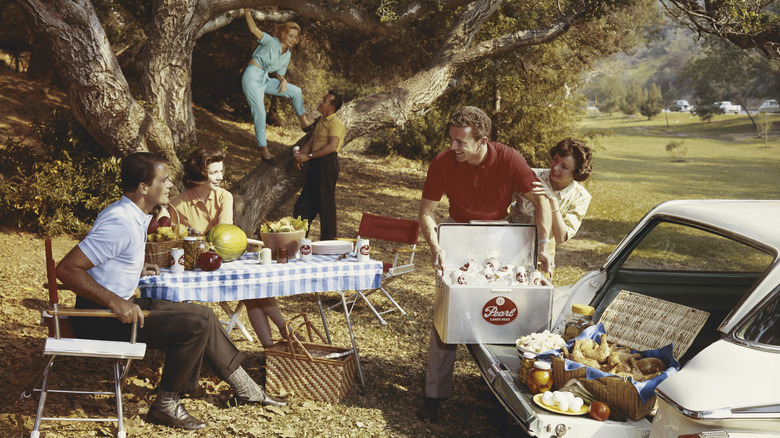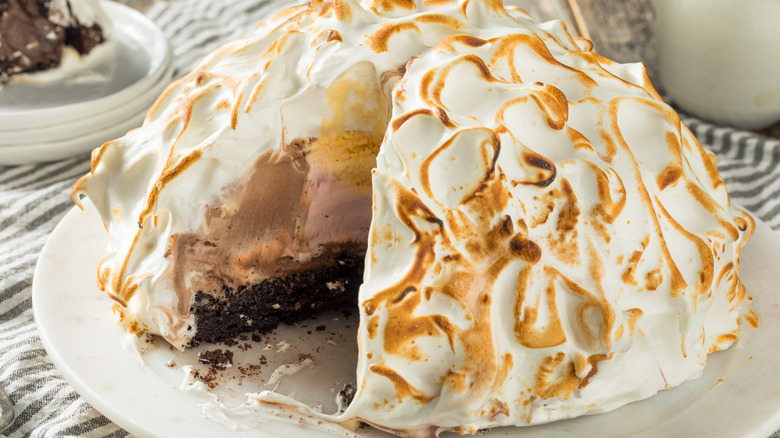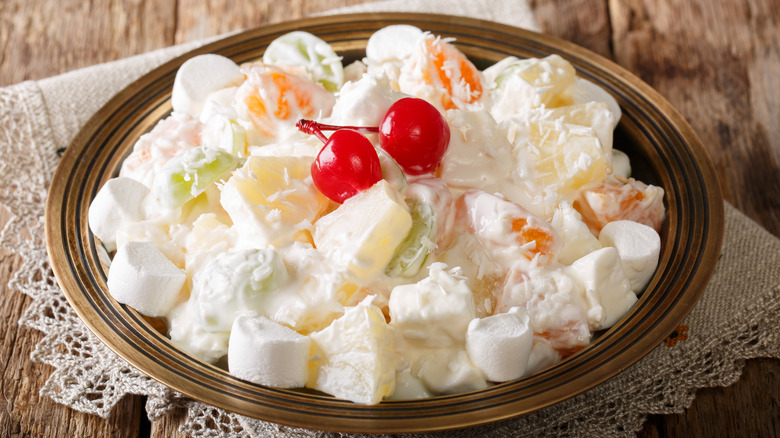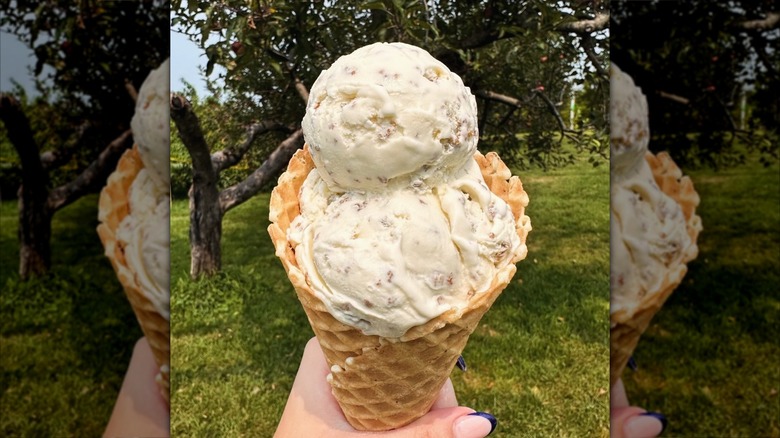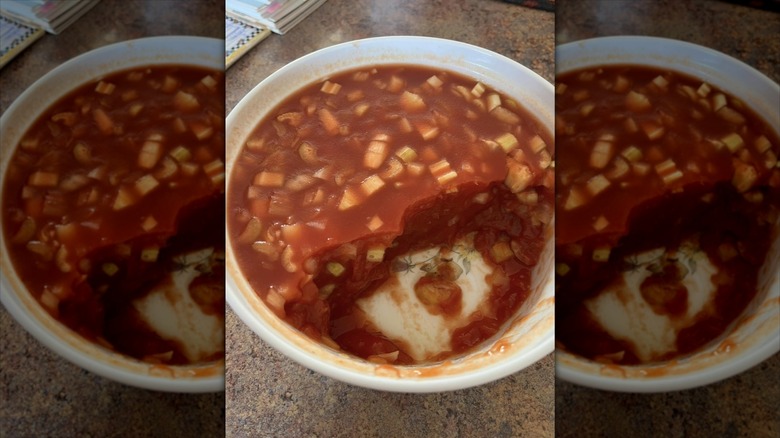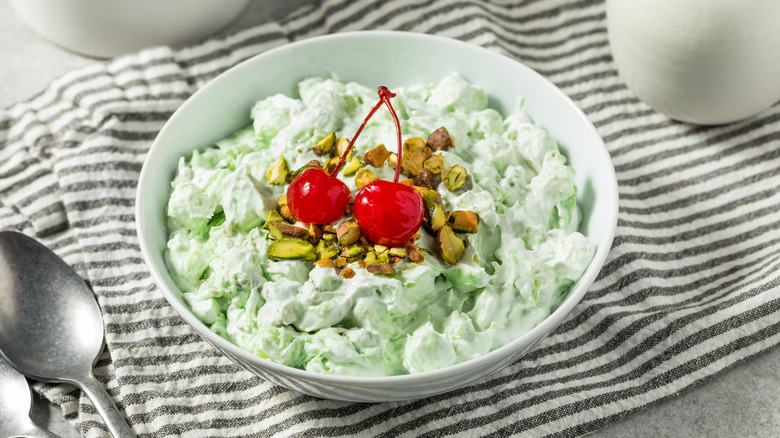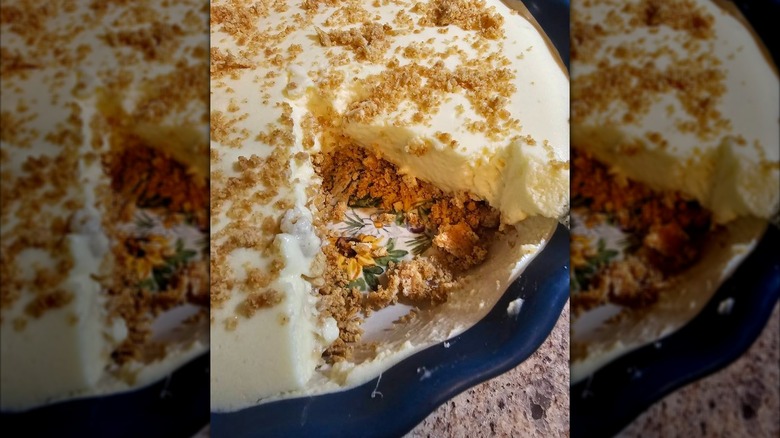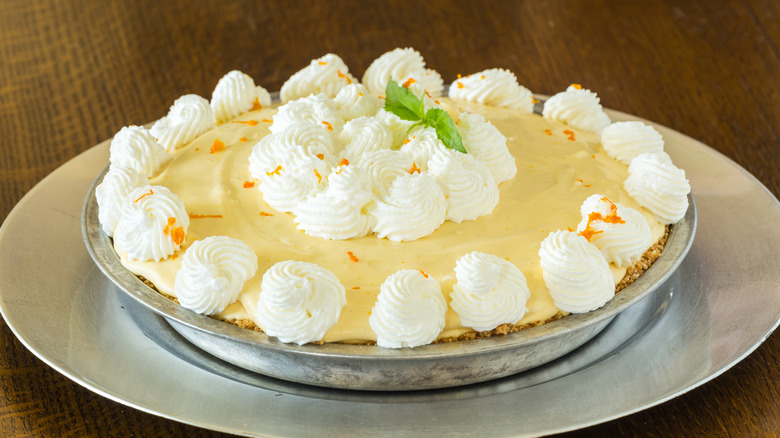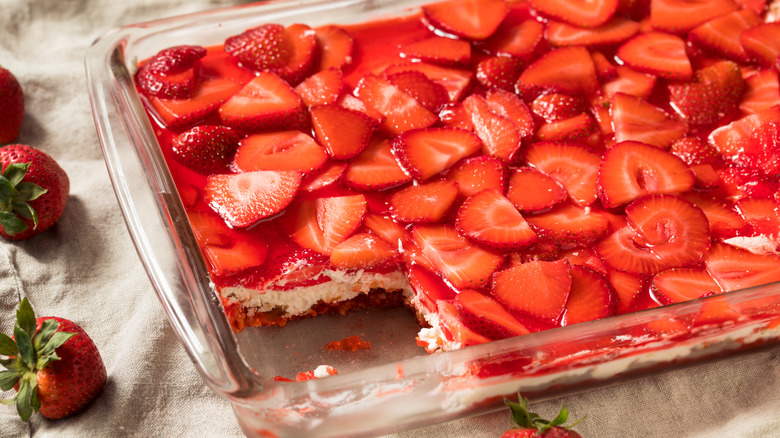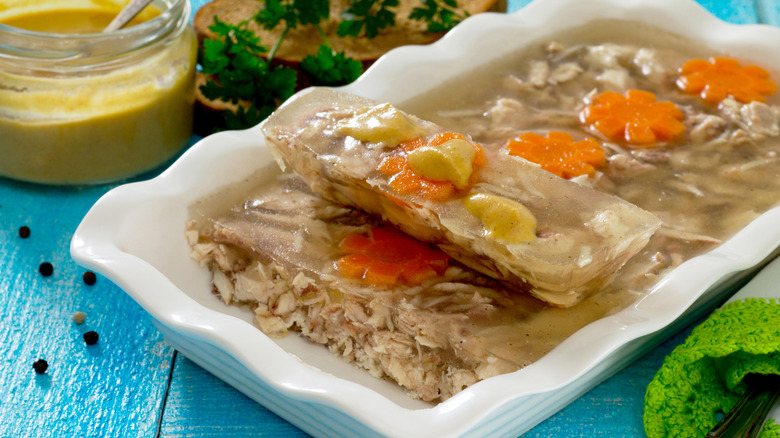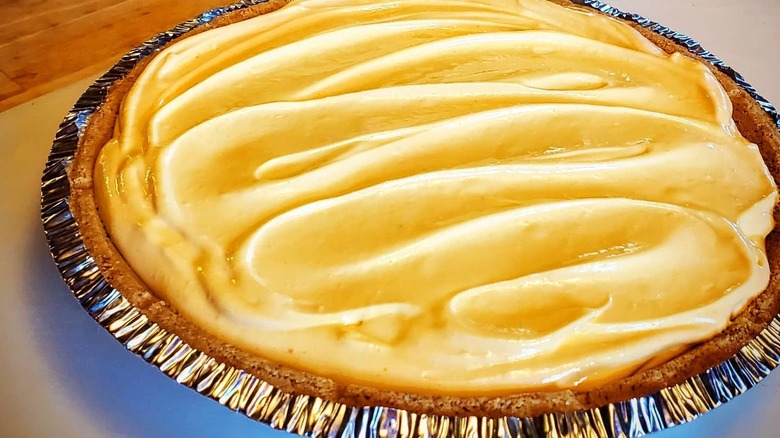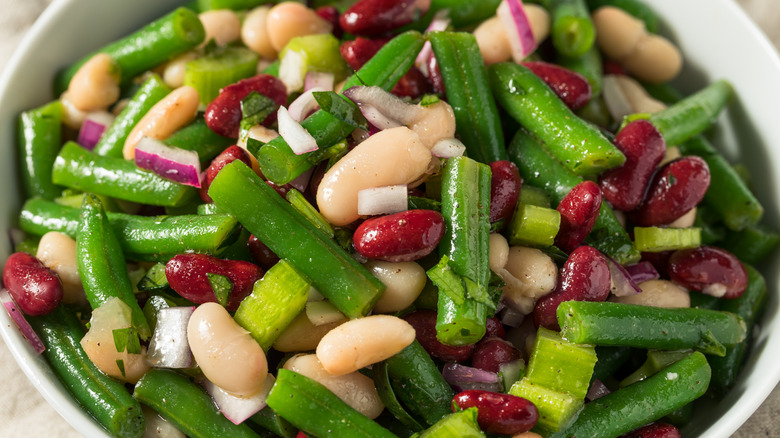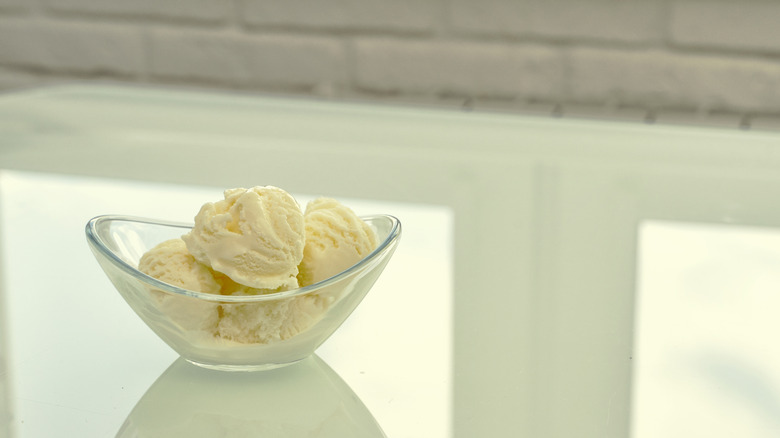12 Vintage Summer Dishes You Don't See Anymore
Just like fashion, dishes go in and out of style. Every generation has witnessed various culinary trends emerge, fade, and sometimes reemerge in unexpected ways over the years. It's all part of the circle of life. Nowadays, your typical summer barbecue spread might include now-classic fare like the delicious (but maybe slightly cliche) watermelon feta salad or no-bake desserts designed for beating the heat.
But just a few decades ago, things looked a little different. The 1950s and 1960s, for instance, marked the golden age of gelatin, giving rise to molded Jell-O salads that served as both refreshing warm-weather fare and eye-catching centerpieces. The '70s and '80s embraced over-the-top flamboyance, with towering trifles, fruit-studded icebox cakes, and the dramatic baked Alaska, often more about the spectacle than the actual dish.
Today, many of these once-ubiquitous dishes have since fallen out of favor, only living on in old-school cookbooks, retro-themed dinner parties, or perhaps at your grandma's dinner table. And yet, there is something charming (if sometimes slightly unhinged) about these vintage recipes. They serve as quirky little snapshots of another culinary era. Let's revisit some of the bygone dishes that once defined a quintessential summertime picnic or potluck. Some of them may be overdue for a modern-day revival, while others are perhaps better left as relics of the past.
Baked Alaska
Mysterious in origin but infamous by name, the once-popular baked Alaska is one of those show-stopping desserts that can't help but impress. Its most widely accepted origin story traces back to Charles Ranhofer, the French pastry chef at New York's iconic Delmonico's in the 1860s. Other sources credit the American scientist Benjamin Thompson, who discovered that meringue could insulate ice cream from heat, with Ranhofer later adapting the concept for theatrical flair. Whatever the case, baked Alaska is a true study in culinary excess –- visually dramatic, technically complex, and unapologetically over-the-top.
It's also relatively labor-intensive. The dessert involves layering ice cream atop a sponge cake foundation, then encasing the whole thing in fluffy, whipped meringue. It can be torched tableside (for full dramatic effect) or baked briefly until golden and crisp on the outside, while the inside remains frozen. The result is a magical contrast of flavors, textures, and temperatures. Ranhofer's original recipe featured banana ice cream and walnut spice cake, but the flavor possibilities are endlessly customizable. Elaborate, performative, and downright campy, Baked Alaska is not the most accessible dish. But when it's done well, it's delicious — even if it rarely makes an appearance at summer gatherings anymore.
Ambrosia salad
If you want to enjoy dessert that labors under the guise of a healthier-sounding dish, ambrosia salad is your best friend. A kitschy classic with Southern roots, this retro dish might appear at first glance to be a wholesome, slightly dressed-up fruit salad. But behind its fruity façade lies a pastel, sugar-laced sweet treat. The traditional version relies heavily on convenience items, just like many old-fashioned recipes. Canned mandarin oranges and pineapple chunks, along with candy-colored maraschino cherries, form the base. Coconut flakes and chopped pecans are then added for crunch and texture, followed by a generous handful of mini marshmallows to give the salad its quintessential, fluffy appearance.
Leaning into its nomenclature, the whole "salad" gets tossed in a tangy dressing, usually made with Cool Whip or homemade whipped cream enriched with sour cream for extra body and a touch of tartness. What you get is a chilled, creamy concoction that somehow straddles the line between dessert and side dish. Perhaps one of America's weirdest Thanksgiving dishes, ambrosia salad may seem a little strange to the modern palate, but there's no denying the fact that it's wildly creative. While it may evoke a nostalgic charm for some, many others may prefer to leave the dish in the days of yesteryear.
Grape-Nuts ice cream
Summer is the season of ice cream — that much has held true for generations. Across the U.S., you'll find an abundance of niche regional flavors, from blue moon in the Midwest to black walnut in Southern states. In New England (and, curiously, Jamaica), one of the more unexpected regional specialties is Grape-Nuts ice cream – a curious, crunchy creation that's as difficult to find as it is delicious.
The key ingredient, shocker, is Grape-Nuts, a famously dense cereal with a surprisingly loyal cult following. If you're not a regular eater of Grape-Nuts, you may remember the cereal from its nationwide shortage that reached such extreme heights that some fans resorted to buying it on the black market. As for the ice cream itself, legend has it that it was born in 1919, when a Nova Scotian chef named Hannah Young ran out of fresh fruit toppings for a sundae and reached for Grape-Nuts cereal on a whim instead, to great effect.
Toasty and malty with a creamy vanilla base, the flavor caught on quickly. Today, Grape-Nuts ice cream is a nostalgic hyper-local dessert that you may find at some New England creameries — and is well worth seeking out — but certainly isn't a regular nationwide fixture.
Tomato aspic
Have you ever craved a tomato soup you could chew? Or perhaps a solidified Bloody Mary? As odd as it sounds, that's basically what home cooks were producing in the 1960s with the tomato aspic, a savory Jell-O mold that walked so modernist cuisine could run. After all, if savory ice cream can exist, why not savory gelatin? Tomato aspic was one of many gelatin-forward dishes that emerged during the so-called Atomic Age of Cooking – the post-World War II culinary boom that brought convenience foods, canned foods, and a fascination with futuristic appliances into the American kitchen.
Gelatin, once a sign of culinary sophistication, became a canvas for experimentation. Culinary titan (and the actually fictional icon) Betty Crocker helped popularize a tomato aspic, made with lemon-flavored gelatin, canned tomato sauce, vinegar, onion juice, red pepper sauce (presumably hot sauce), cloves, and celery. Once poured into a mold and set, the aspic held its shape, often garnished or filled with something creamy for contrast. For the full '60s effect, it was sometimes paired with a cold shrimp salad, turning into a complete, if polarizing, meal. While tomato aspic has vanished from modern tables, it remains one of the more unforgettable and ambitious artifacts of mid-century cuisine.
Watergate salad
Watergate salad is not unlike ambrosia salad in its composition and purpose, but its flavor profile, appearance, and texture diverge from its creamy predecessor. Most notably, it features pistachio-flavored pudding mix, which gives the dish its unmistakable pastel green color. Instead of pineapple chunks, Watergate salad calls for crushed pineapple, lending a smoother, more cohesive texture. Its other ingredients -– mini marshmallows, whipped topping, maraschino cherries, and chopped nuts -– stay true to the mid-century "salad" playbook.
Originally dubbed Pistachio Pineapple Delight by Kraft when the company introduced the pudding mix in the 1970s, the name Watergate salad came shortly after, though its exact origins remain fuzzy. Many assume a connection to the Watergate scandal that brought down President Nixon in 1974, though there is no definitive link. Others suggest it was named after Watergate cake, a similarly green-hued dessert featuring pistachio pudding and whipped topping. Despite its murky etymological origins, the name stuck. Quirky, sweet, and wildly nostalgic, Watergate salad became a staple at potlucks and holidays. The name certainly invites curiosity, and its bold flavor and visual appeal are hard to deny, but it's still largely absent from dinner tables nowadays.
Lemon bisque
If you're a fan of citrus desserts, lemon bisque is a forgotten gem worth rediscovering. Despite its name, it has nothing to do with seafood or soup. This old-school dish features a bright, fluffy lemon pudding layered over a crunchy graham cracker crust. It's essentially sunshine in dessert form, and makes a perfect finale for summer gatherings. The secret to its ultra-light, airy, cloud-like texture? Whipped evaporated milk.
For the best results, leave the can in the fridge overnight, then whip in a thoroughly chilled bowl using an electric mixer until soft peaks form. It's a vintage hack that delivers impressive volume and creaminess without the need for heavy whipping cream — and one that's worth adding to your culinary repertoire. Once whipped, the milk is then gently folded into a prepared box of lemon Jell-O, taking care not to deflate any of the delicate structure you've just built. Light and tangy with just the right amount of sweetness, lemon bisque is an easy, make-ahead dessert that's full of summer charm.
Chiffon pie
A lighter, fluffier counterpart to today's dense custard or decadent cream pies, chiffon pie is an easy, breezy, made-for-summer dessert that hardly feels like an indulgence. Distinguished by its signature airy, mousse-like filling made from whipped meringue folded into a flavored gelatin base, chiffon pie is all about the texture. To achieve this, don't underestimate the value of what is arguably the most important ingredient — quite literally, air.
A classic dessert that seems to have vanished, chiffon pie entered the American consciousness in the mid-1920s and is credited to Monroe Boston Strause, a Los Angeles-based baker who earned the nickname of the Pie King. He was on a mission to revolutionize the dessert world, ushering in an era of whipped, cloud-like wonder. Set inside a pre-baked crust (typically graham cracker), chiffon pies are often chilled rather than baked, making them ideal for summer gatherings and heat-averse kitchens. No oven, no fuss. Popular flavors included lemon, orange, and strawberry, though the possibilities are truly endless in today's ever-innovative culinary space.
Strawberry pretzel salad
Mid-century Southerners and Midwesterners will go down in history for their creative use of shelf-stable ingredients, and strawberry pretzel salad might just be the crown jewel of that legacy. Served as both a dessert and a side dish, this layered creation is as visually intriguing as it is texturally interesting. Built in three distinct tiers, it starts with a salty, sweet pretzel crust on the bottom, followed by a tangy cream cheese and whipped topping layer in the middle, and is completed with a bright, shimmering sheath of strawberry Jell-O with sliced berries suspended on top.
No one is entirely sure who is to thank for this nostalgic masterpiece, but some points go to the 1960s cookbook "The Joys of Jello" for propelling it into mainstream popularity. Strawberry pretzel salad peaked in the decades that followed, and today it remains a beloved regional specialty, particularly in certain parts of the country — including the likes of Pennsylvania, Tennessee, and Utah — though the turf war over its true hometown has yet to be settled. Origins aside, strawberry pretzel salad is evidence that Jell-O, when used wisely, can do great things.
Jellied chicken salad
Anyone flipping through Betty Crocker recipe cards from the 1970s will likely do a double-take when they land on this one. Taking a first glance at the ingredients, it might seem harmless, containing the likes of chicken, celery, olives, lemon, and onion. So far, so good. It reads like a humble chicken salad, the kind everyone can agree on, served on rye bread, tucked into a wrap, or spooned gently atop a bed of leafy greens.
But then comes the twist. That one ominous word –- jellied –- takes a wholesome American staple and twists it into something far more divisive: jellied chicken salad. Instead of mayo, the binder here is unflavored gelatin, dissolved in chicken broth and poured over the usual chicken salad suspects. Once set, you're left with a jiggly block of cold poultry and company. Marketed as a summer dish (naturally), its suggested serving is alongside buttered peas, avocado, cloverleaf rolls with currant jelly, and a glass of iced tea. This is a dish that feels slightly more like a dare than a common summer meal today.
Tang pie
Beyond its undeniably giggle-inducing name, Tang is one of those products that feels frozen in time. Best known as an orange-flavored powdered drink mix, Tang is also available in several other flavors, including lime, mango, and more. Its association with NASA gave it space-age credibility, though contrary to popular belief, Tang was not specifically created for astronauts to drink in space. While it never quite lived up to Kool-Aid level popularity, Tang developed a niche cult following, and still maintains a quiet retail presence today — even if one recipe using the product isn't quite as prevalent.
If there is any overarching takeaway from the world of vintage cooking techniques, it's that creativity is king. As such, it should surprise no one to learn that Tang pie is a thing that exists. A vintage hack that blends the best parts of an icebox cake and chiffon pie, it's made from Cool Whip (shocker), sweetened condensed milk, cream cheese, and, of course, Tang powder. Piled into a graham cracker crust and refrigerated until set, the result lies somewhere between a key lime pie and a Creamsicle cheesecake. Fluffy, tangy (get it?), and absurdly nostalgic, it's the sleeper hit of summer desserts.
Three bean salad
Any salad made with three types of beans could technically be considered a three bean salad, right? Sure. But to make the classic version — the one immortalized in vintage cookbooks across mid-century America — there's a preferred trio: green beans, kidney beans, and wax beans (aka a yellow version of string beans). That's the all-star lineup, according to one Betty Crocker, and, we assume, just about every church cookbook published between 1955 and 1975. Other iterations may include chickpeas, cannellini beans, or lima beans in place of wax beans, red or white beans instead of kidneys, but those are more like distant cousins of the traditional three bean salad.
A staple of mid-century picnics, potlucks, and backyard barbecues, three bean salad has largely been edged out by more trendy, more elaborate sides over the years. It's not flashy, but part of its charm lies in its simplicity. In fact, making a three bean salad is so simple that you may even think you missed a step. You take your beans (canned is fine for stress-free cooking), toss them with chopped celery and maybe a red onion, douse the whole thing in a vinegary, slightly sweet dressing, and you're done. It's light, unfussy, and packed with protein. It's beans doing what they do best: soaking up dressing and showing up on time.
Oyster ice cream
Modern-day foodies are no strangers to off-the-wall, head-scratchingly bizarre ice cream flavors. In recent years, consumers have seen everything from Kraft Macaroni & Cheese ice cream to mayo ice cream and other savory curveballs. None of these flavors compares to the mysterious, possibly apocryphal oyster ice cream, which appears in a single, very real cookbook: "The Virginia Housewife," published in 1824 by Mary Randolph. Her recipe — situated casually among classics like raspberry, coconut, and other relatively straightforward, non-offensive flavors — begins with a creamy oyster soup that's strained, combined with cream, flour, and eggs, and frozen into what is, technically, ice cream.
The "why" of oyster ice cream is unclear. But it appears to have been offered without irony. Just a bygone palate, a bucket of oysters, and a dream. What is clear is that oyster ice cream has lived on more as a historical oddity than a culinary staple. Unlike other retro recipes, this one never seems to have caught on or entered the mainstream — and to be honest, perhaps it's better off that way. Still, it's a reminder that when it comes to ice cream, there have never really been rules. And maybe, in the proper context, it wasn't all that weird. (Or maybe it absolutely was.)
